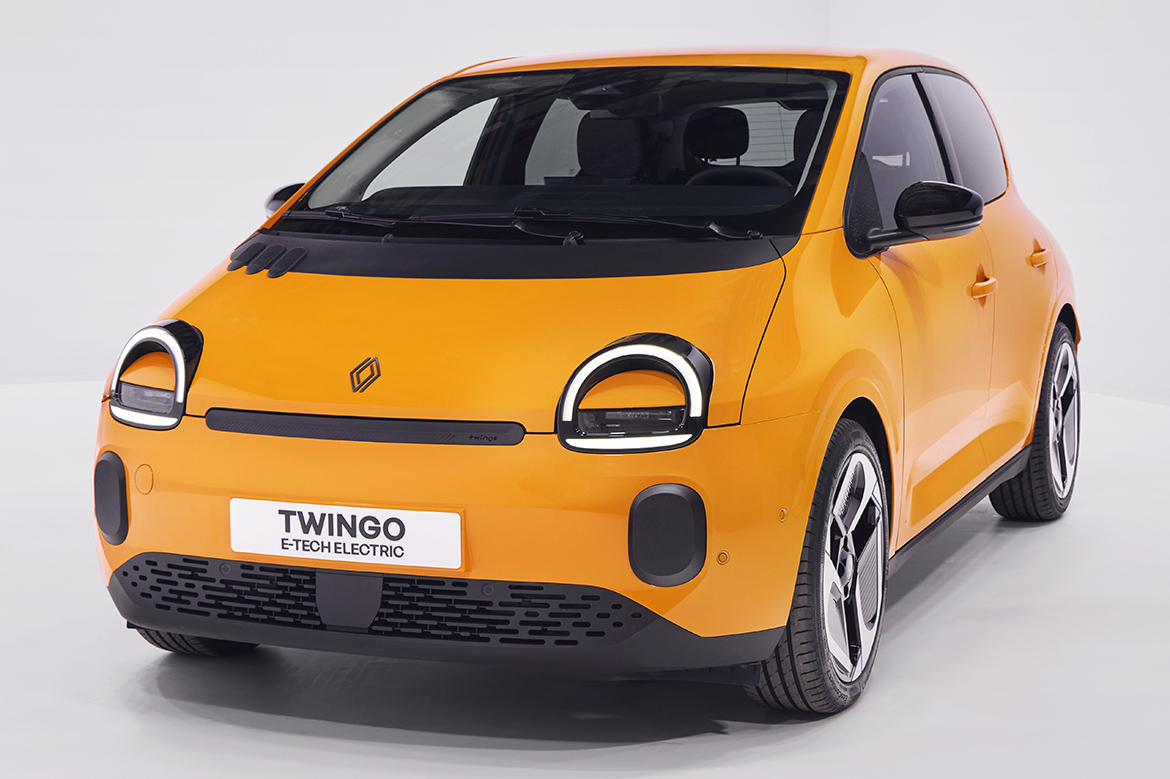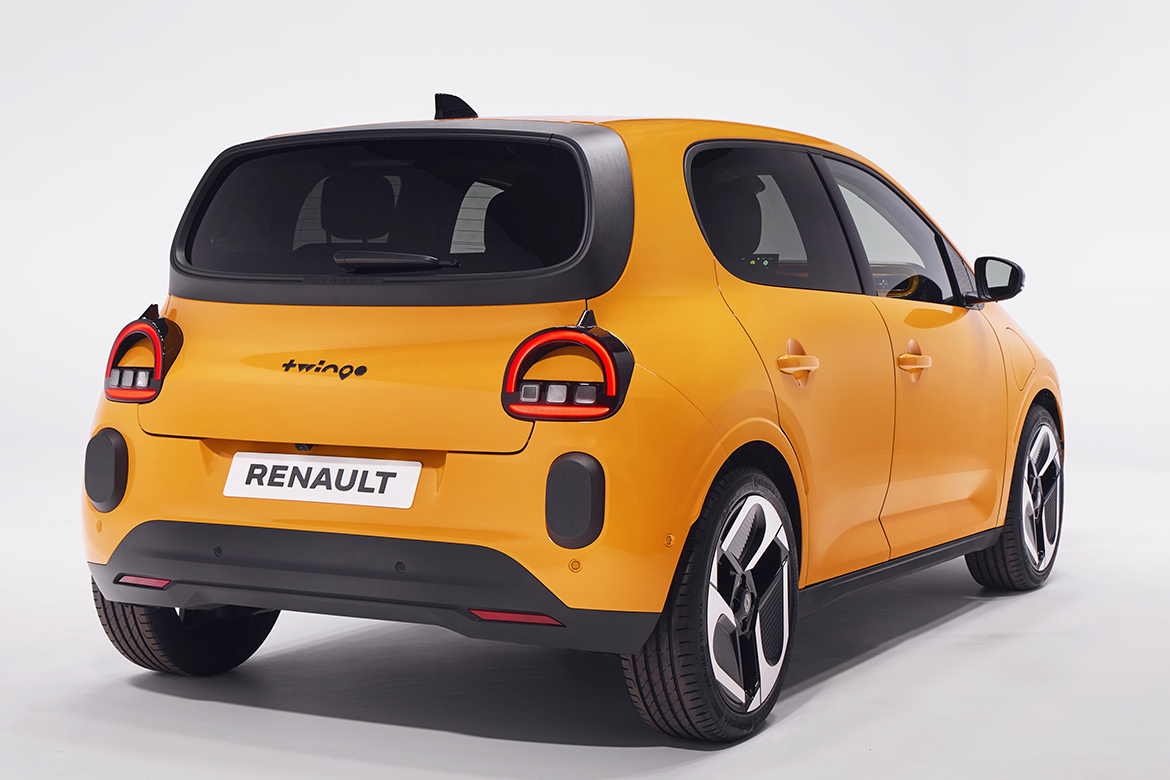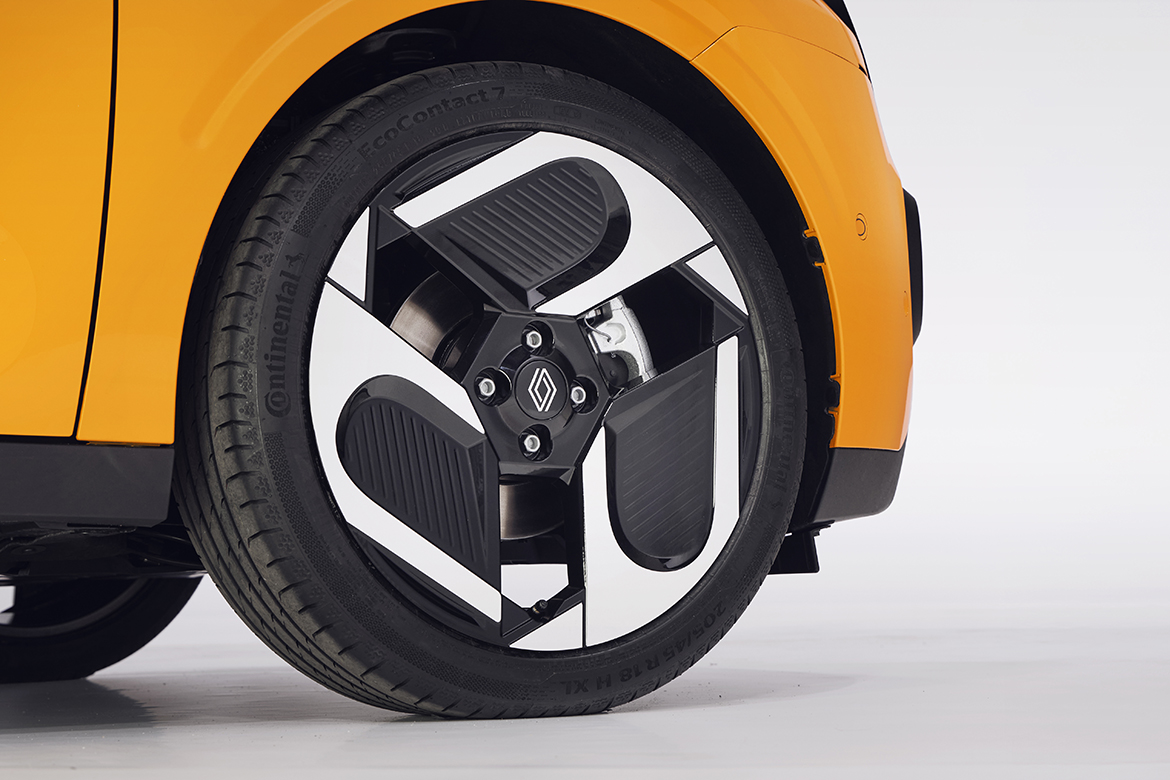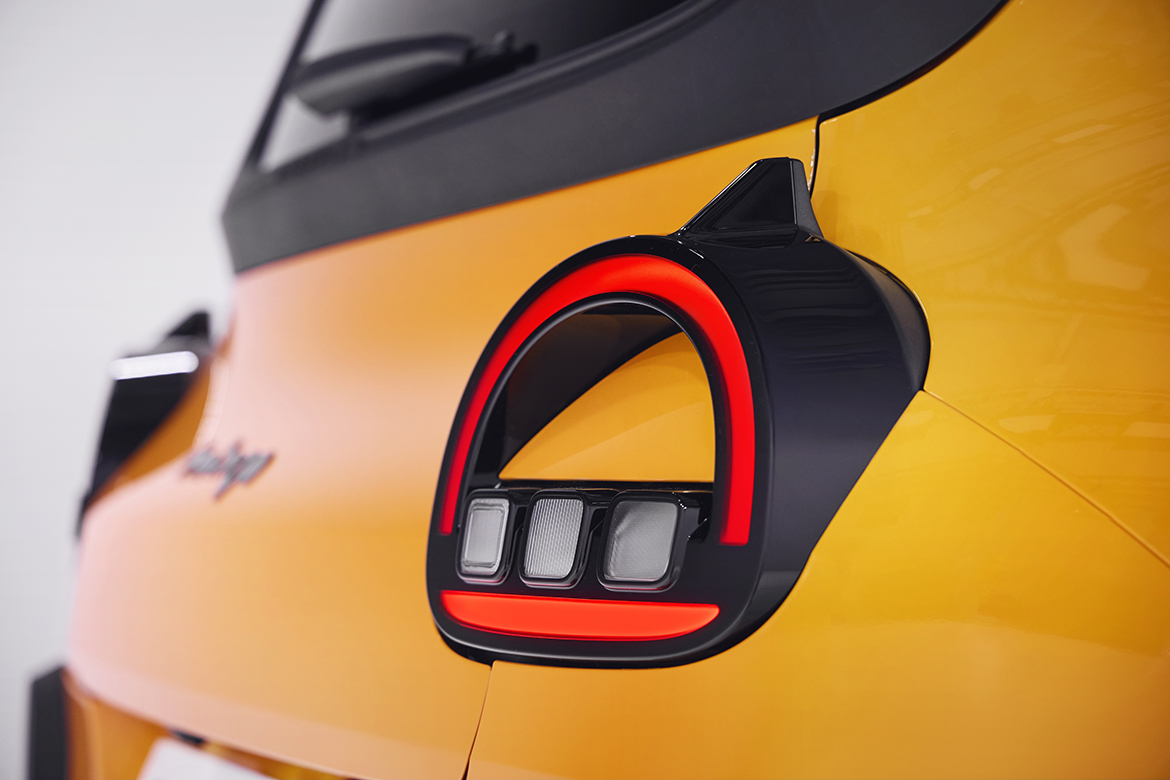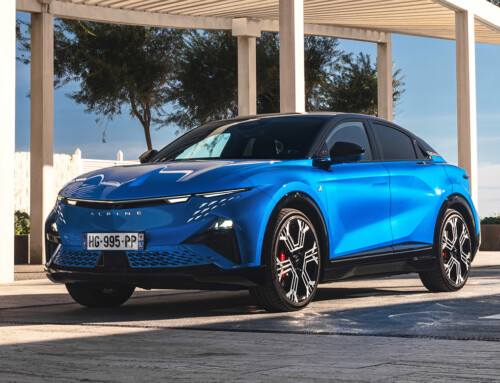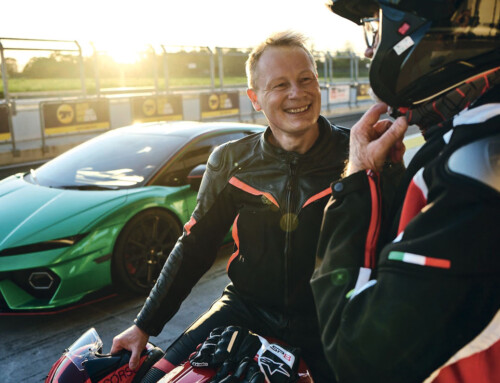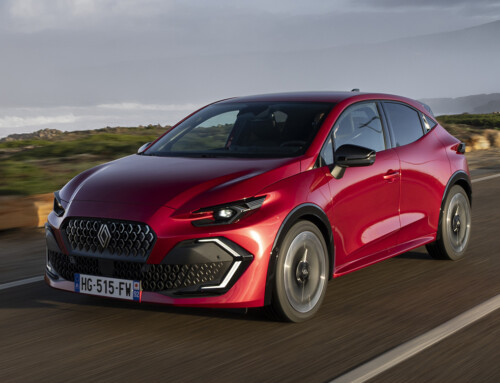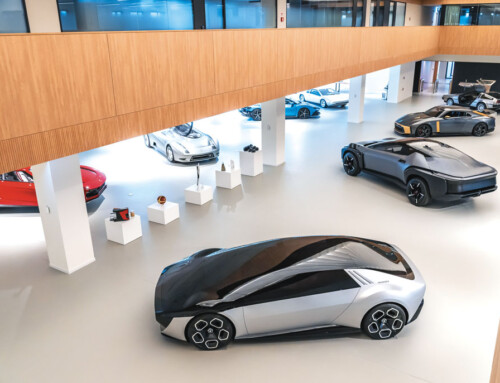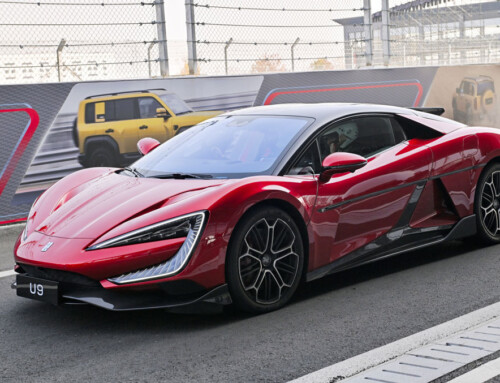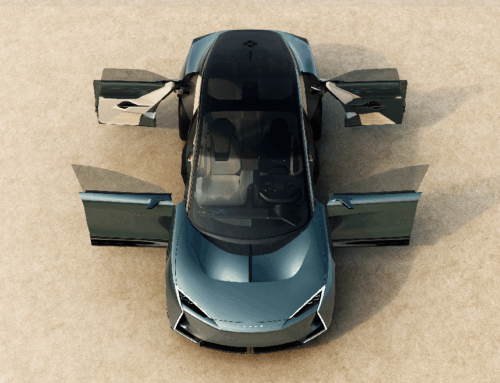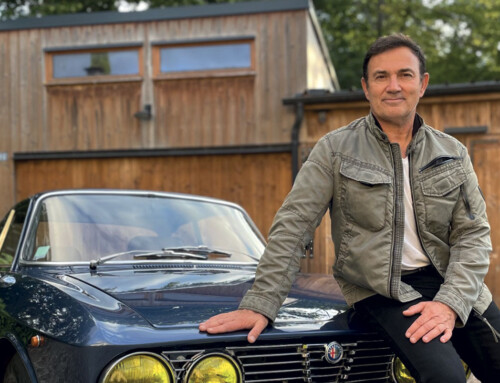At the 2024 Paris Motor Show, Sundeep Bhambra, head of concept car styling and advanced projects for Renault, assured us: “Much of the prototype is final. In fact, as much as 90% of the exterior…” Just over a year later, that promise has been largely fulfilled: the proportions, the “frog-like” front end and, above all, many of the distinctive details from the showroom are joyfully evident in the production Twingo. With an inevitable and rich play on reminiscences of the first generation, a small miracle of form and function from October 1992. “We had to start again from the boldness of the past, from the minivan line and the ‘mischievous’ spirit,” says Paula Fabregat-Andreu, design director of the Ampère electric division. Of course, everything has been updated, from the zero-emission platform to the dimensions: the length gains 36 cm (from 343 to 379), the width 9 (163-172), the height 7 (142-149) and the wheelbase 15 (234-249), while the 13“ or 14” wheels now gravitate towards 16“ or even 18” .
But the eye is immediately captivated by the curves that recall its origins, accompanied by just four launch colors, as was the case thirty-two years ago, in an almost perfect replica mitigated only by the five-door profile. And it is precisely around the openings that the most significant critical issues arise, as the conventional shape of the handles (all clearly visible on the bodywork) and the rear compass windows could leave one perplexed. The emblematic single-blade windshield wiper has disappeared, with the three false air intakes on the hood becoming almost a pretext for concealing the windshield washer reservoir. On the other hand, the headlights conceal genuine technological excellence beneath their appealing appearance, celebrating the union of past and present in the best possible way. Despite the return of the semi-circles, both the front and rear lights incorporate ultra-modern lighting elements, combined with alternating body-color and glossy black inserts, in a composition that shows great care for a city car. At the top of the tail lights, two unexpected mini-fins break up the aerodynamic flow (“We will come up with a clever solution to overcome the turbulence in the bodywork cavity,” Bhambra had enigmatically announced).
Inside, the clever use of elements borrowed from the R5 and R4, including the 10“ central screen and gearshift control, is interspersed with retro touches such as painted inserts, a red hazard button, and a prominent console, as well as contemporary features such as ”alphabetic” graphics and the curiously positioned handbrake button, and a whole range of 3D-printed accessories. While the rear bench seat remains sliding (this time in two sections and with a longer travel), the front passenger seat can now also fold down into a table, and the trunk features a split double floor: incredibly, practicality is enhanced, complemented by the YouClip fasteners already appreciated on Dacia models.
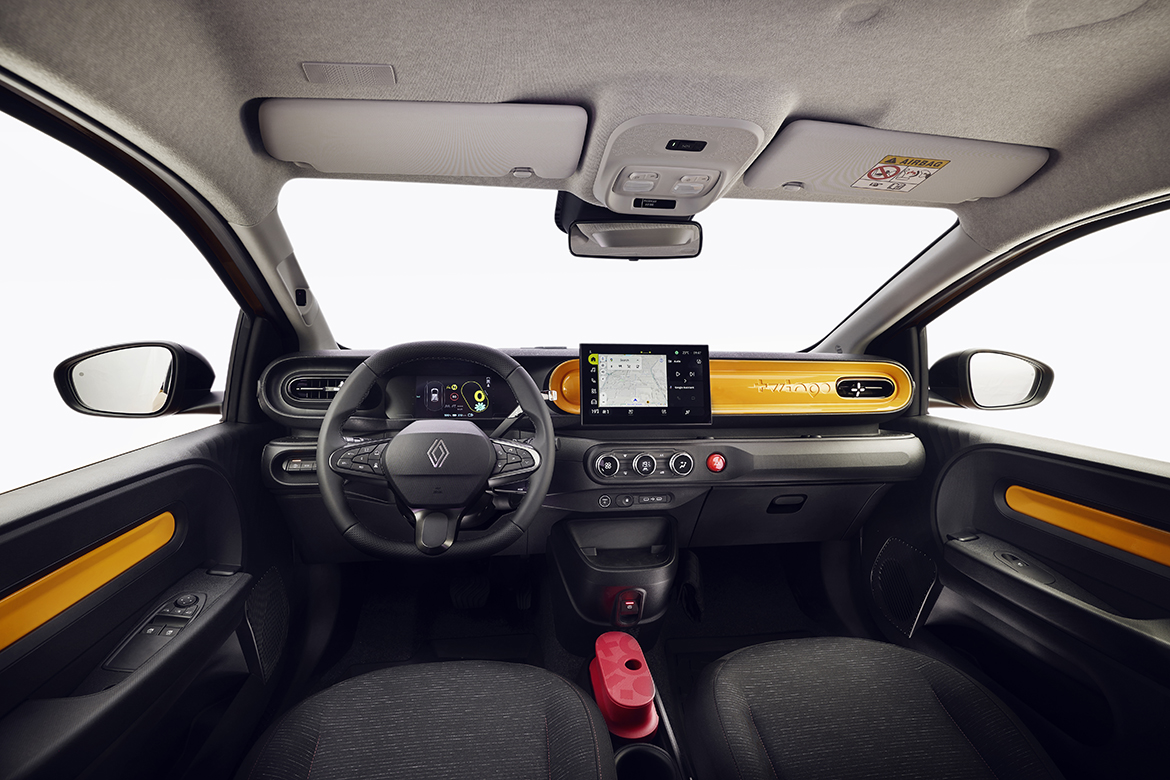
Some people on the web have pointed out parallels with other interesting projects from the past, including the black rear window frame, which, mimicking the movement of the original sheet metal, also revives the plastic solution of the 1970 Honda Z, or the oblong bumper inserts similar to the 2007 Citroën C-Cactus prototype. But that doesn’t matter: the latest Twingo certainly boasts unparalleled freshness. For timeless joie de vivre, as promised a year ago.

